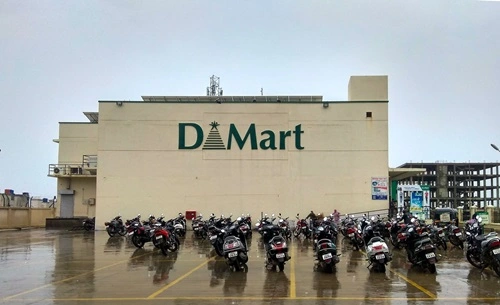In a retail landscape buzzing with digital innovation, express grocery delivery, and evolving consumer expectations, DMart continues to stand out as India’s definitive value-oriented retailer. Founded in 2002 by visionary investor Radhakishan Damani, DMart has steadily transformed itself into a retail juggernaut. As of March 2025, the company operates 415 stores across 12 states, with a workforce of over 73,000 employees. Its “Everyday Low Cost – Everyday Low Price” (EDLC–EDLP) philosophy resonates deeply with India’s expanding middle-class and value-conscious shoppers. Q3 FY25 results underline this: DMart posted ₹15,972 cr revenue (YoY +17.7%) and ₹724 cr profit (+4.9%), with 387 stores operational by December 2024.
Below is an in‑depth SWOT analysis of DMart’s current strengths, weaknesses, opportunities, and threats, peppered with consumer sentiment and strategic reflections from the field.

Strengths
1. Rock‑solid cost leadership: DMart excels in negotiating bulk deals with manufacturers and tightly managing logistics. This no‑frills supply chain enables it to offer attractively low prices—earning enormous trust among budget-sensitive consumers .
2. Excellent financial health & self‑funded expansion: The company maintains a debt‑light model, organizing expansion primarily through internal cash flows. This fiscal prudence allows it to open new stores without reliance on external funding.
3. Extensive store footprint & brand recall: With 415 stores and counting, DMart covers Western, Southern, and increasingly Northern and Eastern states. Consumers rate its brand highly—especially in smaller towns where DMart often functions as a mini‑mall.
4. Efficient supply chain & inventory control: High inventory turnover and just-in-time restocking keep waste low, costs in check, and shelves full—essential strengths in a low-margin model.
5. Data analytics for consumer insights: DMart invests heavily in data analytics—₹500 cr over three years—and employs over 1,500 data professionals to predict demand, optimize pricing, and boost customer retention (up 18%).
Weaknesses
1. Underdeveloped e‑commerce (DMart Ready): Despite launches in 16 cities, DMart Ready still lags behind delivery-first platforms like Blinkit, Zepto, and JioMart in speed and UX.
2. Heavy reliance on physical stores: With ~95% of revenue sourced offline, DMart’s business is vulnerable to disruptions like COVID‑19 lockdowns and changing shopping habits.
3. Geographical imbalance: Roughly 70% of stores are in Western/Southern India, leaving North and East under-penetrated. Cities like Delhi-NCR and Kolkata have minimal presence.
4. Constrained product mix & margins: Emphasis on essentials caps margins. Categories like electronics or premium grocery remain untapped, limiting revenue diversification.
Opportunities
1. E‑commerce & omnichannel expansion: Enhancing DMart Ready with features like faster delivery, live tracking, improved search, and app polish can significantly increase digital traction.
2. Pan‑India footprint: Accelerating entry into Eastern, Northeastern, and Northern markets (e.g. Odisha, Assam, Jharkhand) could capture a wave of growing organized retail demand.
3. Private‑label and non‑food expansion: DMart’s in‑house Minimax products already show promise. Scaling up with electronics, apparel, or wellness items could boost margins and brand loyalty.
4. Warehouse automation & logistics tie‑ups: Automating DCs and partnering with logistics firms could improve DMart Ready efficiencies and support faster deliveries .
5. Sustainability initiatives: Energy‑efficient stores, reduced plastic, and eco‑friendly packaging will appeal to conscious shoppers and align with global retail trends.
Threats
1. Hyper‑competitive quick commerce: Players like Zepto, Blinkit, Swiggy Instamart and JioMart offer ultrafast delivery and free or low delivery fees—even DMart has reduced fees to zero to counter them.
2. Digital disruptors & big‑tech competition: Amazon, Flipkart, and Reliance Retail’s e‑grocery push may erode DMart’s market share unless it accelerates its digital pivot.
3. Inflation & supply‑chain volatility: Any spike in input costs—fuel, raw materials—strains DMart’s low-margin model. Their inability to pass costs may dent profitability.
4. Economic slowdown & consumer shift: Reduced rural/urban spending could impact sales. Slow same-store growth (down to 8.1% from 10.3%) suggests early saturation in mature areas.
5. Regulatory & logistical hurdles: Retail policy shifts, land acquisition challenges, and import restrictions could complicate expansion plans into new states.
🧭 Strategic Takeaways
- Double down on digital: Fix app UX, fortify logistics, explore micro‑warehouses for express delivery.
- Accelerate store roll‑out: Target underserved North–East India with 40+ planned store openings in FY25.
- Broaden portfolio: Push private labels and introduce high-margin non-grocery offerings.
- Automate & partner: Streamline back-end operations to support both offline and digital arms.
- Sustainability & community: Introduce eco‑initiatives to retain brand leadership and appeal.
Final Word
DMart’s core strength remains its unwavering commitment to value and operational discipline. The brand resonates with millions who’d rather walk into a DMart store for their weekly staples than pay premiums elsewhere. With a vault of resilient finances, a trusted offline footprint, and rising momentum in digital, DMart is perfectly set to evolve into an omnichannel powerhouse.
India’s retail future is multi-pronged—blending physical convenience, digital speed, affordability, and sustainability. DMart is already on that trajectory. By strengthening its digital capabilities, widening its geographic and product footprint, and preserving its cost leadership, DMart isn’t just surviving—it’s thriving as India’s value retail leader.

Meet Suhas Harshe, a financial advisor committed to assisting people and businesses in confidently understanding and managing the complexities of the financial world. Suhas has shared his knowledge on various topics like business, investment strategies, optimizing taxes, and promoting financial well-being through articles in InvestmentDose.com


